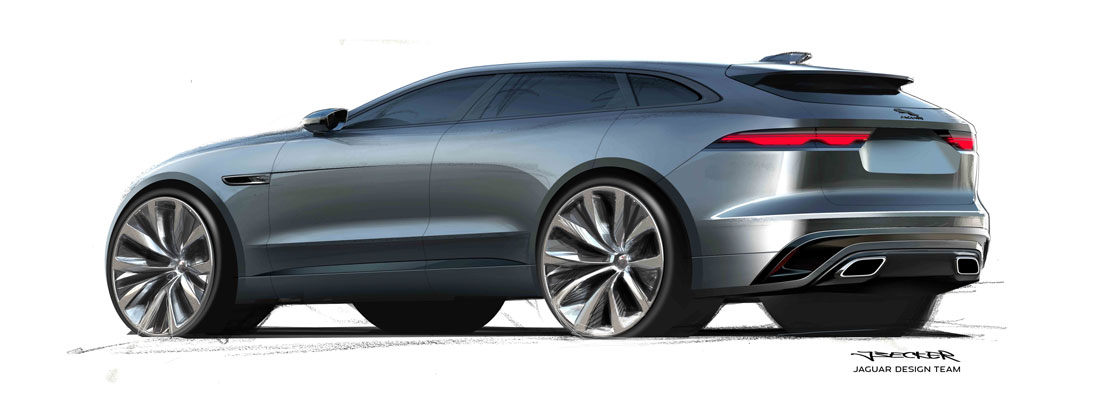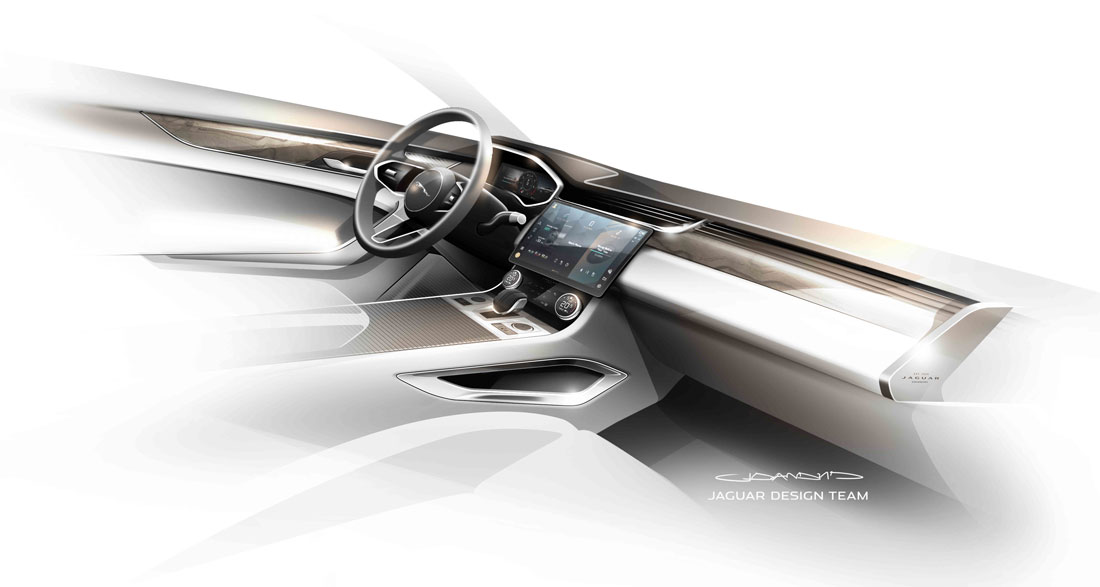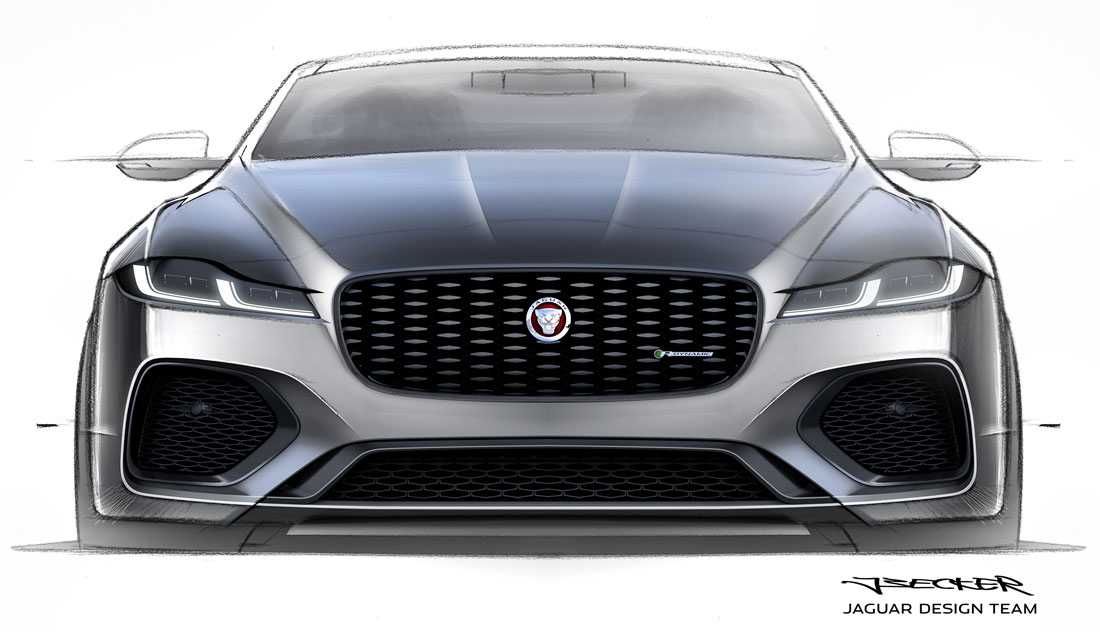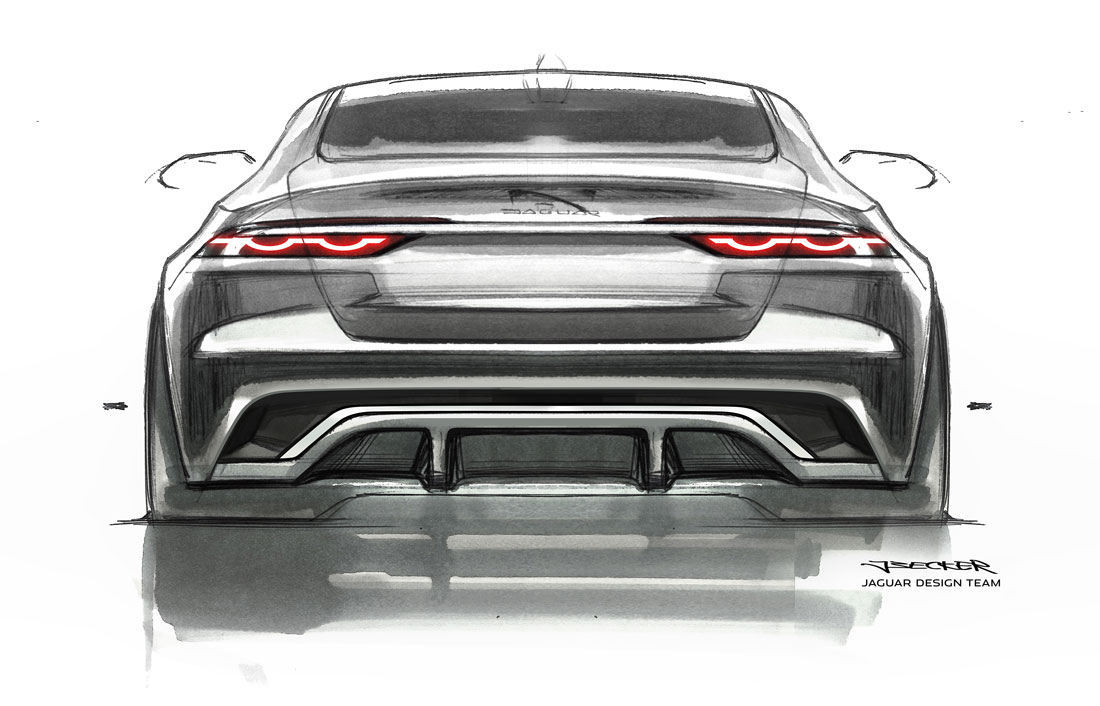The watchword is “luxury”, to which the adjective “modern” is added. With this flag Jaguar faces a race towards the future, through an epochal revolution that has also affected the internal structure, attributing the responsibility for design to Gerry McGovern, Jaguar Land Rover Chief Creative Officer, who until now only led Land Rover’s design. The race is towards the stated goal of the Jaguar Land Rover group – JLR for short – of becoming a zero-carbon company by 2039. The first stage will be, in 2025, the first new all-electric Jaguar (the SUV I-Pace is already electric).
The race has already began
In fact, the race, as explained in an interview with Auto&Design by Adam Hatton and Alister Whelan, respectively head of exterior and interior design of Jaguar, has already begun. For the 2022 models, explains Hatton, “we have revisited the entire range, with a view to greater luxury, improving the external proportions and, especially in the interior, improving the details and the sense of quality that Jaguar must always have”. In addition, the F-Pace and E-Pace SUVs have a plug-in and mild hybrid version.
In search of formal purity
The new commandment envisages “reinterpreting the future of modern luxury through design”. But how? “What Adam did on the exteriors was refresh them – explains Whelan – but for example the interiors of XF and F-Pace have been completely renewed: doors, instrument panels, consoles, steering wheels, HMI. Quite unusual for cars just at this point in their cycle. Jaguar have always had luxurious interiors and the way we distil that tradition into something modern makes them look more pleasing, beautifully structured, if anything with a reductive, very pure sense of design”.
The goal is “the highest level”
Says Hatton: “We have always been asked to have the best design for every category we compete in on the market. My part is to attract customers with the appearance of the exterior, then it’s up to Alister: when they get into the car they must have a wonderful experience and confirm to themselves that they want that car, indeed that they need it. We have done this throughout the range: the cars were already excellent, but now they are truly at the highest level”.
Restart form a blank sheet
The Jaguars of the new course will likely enjoy the same styling advantages that the I-Pace electric SUV had. “We were able to start from a blank sheet”, says Hatton. “With the help of the engineers we fixed the proportions, the dimensions of the wheels, the silhouette, the short overhangs. We were able to create space”. But that’s not all. Whelan says that “the future of electric cars will increasingly be linked to connectivity and support services, so we must develop the future of digitalisation to support the future of electrification”.
Sustainability as key element
One of the key points is sustainability, both in terms of production methods and in the choice of materials. JLR already uses fabrics taken from recycled bottles, leather that is leather-free, recycled aluminium. “Our goal”, says Hatton, “is to be the best in the world”. And if the ghosts of the E-Type and Mark II hover in Gaydon’s ether, their presence must only be treated as that of two beautiful sculptures, as “a source of inspiration”, says Whelan, “to encourage us to express the same quality”. “Those cars”, concludes Hatton, “were extremely advanced compared to the competition and this is what we are trying to do now. We want our cars, encapsulating modern luxury, to be the most desirable”.
(Full article in A&D no. 249)
















